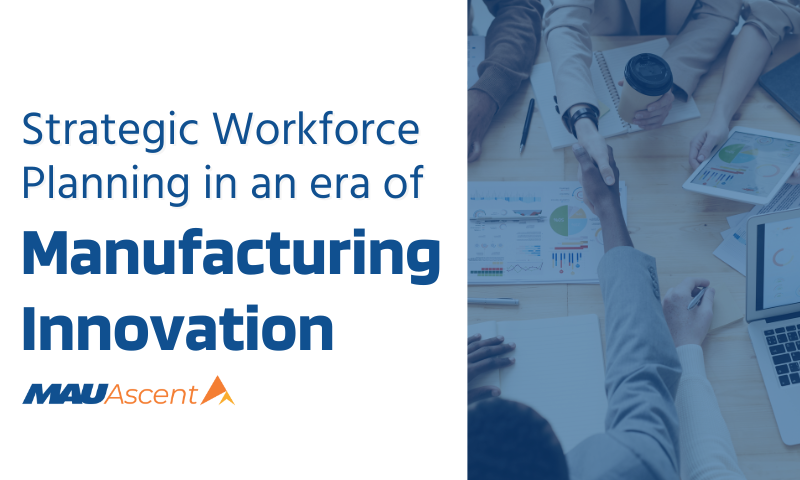Manufacturing is a cornerstone of the world’s economy and an essential factor for job growth. As modern technology advances, it can be hard to stay ahead of the curve in the manufacturing industry – especially when looking toward the future of manufacturing jobs.
The manufacturing industry employs 8.51% of the total US workforce. As of 2021, 12.29 million employees across manufacturing sectors take annual compensation ranging from $33,249 to $279,488. To ensure that our industrial base thrives in today’s ever-changing landscape, we must focus on harnessing education and innovation practices for future manufacturing jobs. Here you’ll learn about these forces’ vital role in determining who gets hired as a manufacturer now – and in years to come.
The Future of Manufacturing Jobs
The manufacturing industry is constantly evolving, and we must keep up with the advancements to meet the needs of the future. To do so, we must prioritize education and innovation in the workforce
Projections are that the manufacturing industry will lose 444,800 jobs by 2029. which sounds scary. But, experts predict that advancements over the next decade will create four million jobs in the manufacturing sector. So, it’s on manufacturing leaders to successfully bridge the skills gap to mitigate losses and fill new roles.
How Will Manufacturing Jobs Change Over the Next 10 Years?
As emerging technologies like electric vehicles, artificial intelligence, robotics, and automation continue to evolve, the manufacturing industry can expect to see a shift in job roles and responsibilities over the next ten years.
With electric vehicles on the rise, manufacturers will need to focus on developing new skills to support the production and maintenance of these vehicles. Artificial intelligence and robotics will play an increasingly important role in streamlining processes and increasing efficiency, requiring workers to develop new skill sets to work alongside these technologies.
Additionally, automation integration will alleviate some of the physical demands of manufacturing jobs, allowing workers to focus on higher-level tasks. It’s worth mentioning, however, that automation drove the highest decline in US manufacturing jobs. About 7.2 million jobs have already been lost to automation, decreasing the manufacturing employment rate by 37%.
The future of manufacturing jobs is bright, but it will require a focus on education and training to keep up with technological advancements and mitigate job losses.
The Bad News- Our Current Education Infrastructure is Not Equipped to Teach the Skills Required for The Future of Manufacturing Jobs
The manufacturing landscape is changing rapidly with the advancement of technology and automation. But is our education system equipped to teach the skills required to meet the demands of this changing landscape? Unfortunately, the answer is no.
Our current education infrastructure does not have the resources and curriculum needed to prepare students for future manufacturing jobs. Manufacturing employment statistics show manufacturers in the US have difficulties filling 46% of open positions due to a mismatch in skills. It’s essential that we focus on training our workforce for these new job opportunities, and that starts with investing in education and updating our curriculum.
While it may require some significant investments, it’s an investment that pays dividends in the long run by providing our students with the tools and knowledge needed for successful careers in the manufacturing industry.
How Can We Bridge the Skills Gap to Ensure Education Keeps Up with Advancements in Manufacturing?
As manufacturing continues to evolve, the skills gap between what employees offer and what the industry requires has become more apparent. The challenge of bridging this gap is complex but crucial to ensure that education keeps up with advancements in manufacturing.
A multi-faceted approach must be taken, including creating partnerships between education and industry leaders, investing in vocational training programs, and encouraging a growth mindset in students. This will require collaboration between government officials, educators, and industry experts.
By working together, we can ensure that the next generation of manufacturing professionals is equipped with the knowledge and skills needed to keep pace with advancements in the industry.
Steps You Can Take Today
Preparing for future manufacturing jobs will require a concerted effort from everyone involved. We need to emphasize the STEM curriculum to create more prepared students capable of tackling the advances that will take place in the industry. At the same time, we need to focus on creating a culture of innovation and sustainability within our companies and communities so that when these new jobs become available, not only are they available, but they also provide lasting solutions to our shared problems.
For the businesses, investors, companies, and individuals engaged in this area, understanding this shift toward advanced technology and recognizing how it can be used for good is critical in ensuring these jobs are maintained long-term while having a positive environmental impact.
By investing in their workforce through training programs and partnerships with educational institutions, manufacturers can equip their employees with the skills needed to work with new technologies and foster a culture of innovation and continuous learning. Embracing innovation is also crucial, as it can lead to developing innovative products and processes that set them apart from competitors.
By adopting a proactive approach to education and innovation, manufacturers can easily adapt to changes and challenges and confidently navigate the future.





